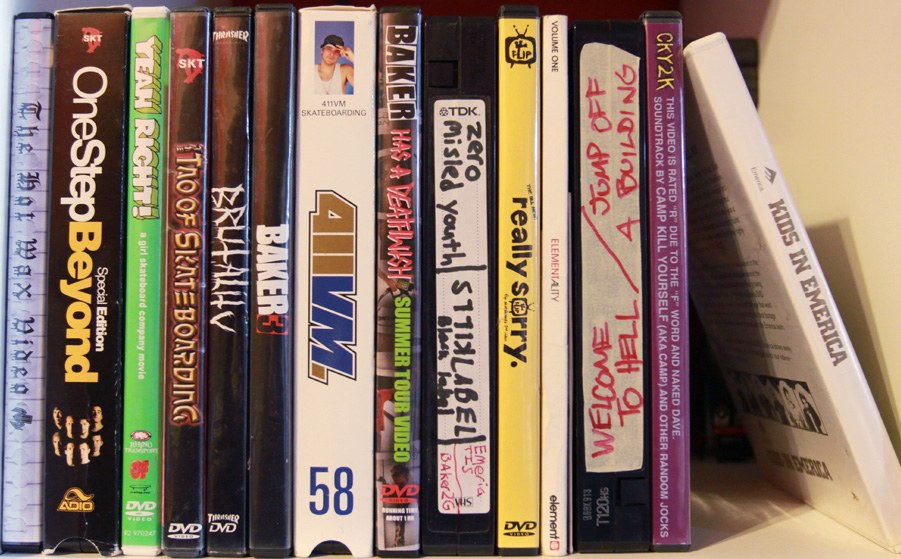
A few months ago, Kingpin posted an article by Arthur about how the skate video is being changed by the huge amount of footage being posted online everyday. This is a discussion that shows up in the skate world rather frequently, popping up in interviews and the occasional magazine. Most of those discussions hold kernels of what Arthur’s post fleshes out more fully: the Internet is killing skate videos, not only as a medium, but as an artform.
They argue the proliferation of online videos has lead to an overkill of information. We have been exposed to so much footage that skaters have developed a voracious, yet ungrateful, appetite for clips and parts. And this appetite is hurting skating as a whole.
But can we really make this statement with a lot of confidence?
Skate videos have not been as isolated or solitary as people seem to remember. At least not for the past ten years or so. Sure, big videos may have come along with some gaps in between them, but there were always other videos to fill them in. When I started skating, it seemed like my friends and I were always coming across a video we hadn’t seen before. This was the era of monthly 411VMs and quarterly On Videos.
Think about the parts and skaters that you love. Why do you like them so much? One reason may be the fact that you were forced to watch that VHS or DVD until you got your next video. But I’m sure a much more important reason is that the skating spoke to you in some way. That’s why you returned to those parts regardless of what new video you bought and why you still think about them to this day.
Online parts can provide that same feeling. I’ve watched dylan. and Austyn Gillette’s Thrasher part just as many times as I watched Daewon in Skate More or PJ Ladd in PJ Ladd’s Wonderful Horrible Life. That’s because all of those parts are awesome and reflect aspects of skating that I like and want to support – That’s why all of us watch parts repeatedly. In fact, that’s why we watch individual tricks and other minor details (like how curbs affect rollaways or how Gino pushes). If a part or a trick speaks to you, it will do so regardless of the medium you receive it in. Those moments will stand out amongst the sea of other videos that you can barely remember. They will play over and over in your head and you’ll find yourself reaching for the remote or moving your cursor to start the section over again and again.
If we are indeed becoming desensitized, I think it’s to repetitive skating. The Internet is a prime example of what happens when people become wrapped up in trends and emulate one another a little too closely. You get a laundry list of people on HellaClips that you can’t tell apart from one another, that blend into each other until you’re in an uncaring daze. I don’t care about the thousandth kid that yo flips at snails pace in his pre-fab skatepark. But I do care about the people who use the Internet to do something different and make me want to skate, like the Map Masquerade Tour. Those are videos that could not have been shared as effectively before. The Internet does not make us desensitized to worthwhile skating, it just exposes us to more skating that is potentially worthwhile.
”The Internet does not make us desensitized to worthwhile skating, it just exposes us to more skating that is potentially worthwhile.”
The ease of access provided by the Internet allows for numerous understandings and perceptions of skating to be shared within our subculture. It allows individual skaters to share what exactly skateboarding means to them and what is important about it. It stops things from becoming stale and forces skateboarding to progress. An online buzz will arise whenever someone or something relatively unknown and unexpected pops up that accurately or imaginatively portrays an aspect of skating that we always knew was there, but don’t get to see enough. This notoriety forces bigger magazines and mainstream skateboarding sites to sit up and take notice, broadcasting this video to even more people.
Before the mass-proliferation of Internet videos, most of us would have never been exposed to the eccentric geniuses of the Golden Egg video and Fancy Lad Skateboards, among others. A few years ago, these products would be confined to the small cliques of local scenes and maybe an adventurous tourist.
While we might currently have to sit through a couple of embarrassing videos here and there, by (theoretically) giving every skater a voice, the Internet allows us to better illuminate all aspects of skating: From the jockish and “Xtreme,” to the creative and inspiring, and to the raw and just plain weird.
Another claim in Arthur’s article is that the Internet puts pressure on skate companies and individuals to release as much footage as possible, regardless of quality, to “stay relevent.” This pressure inevitably forces videographers and skaters to ignore crafting a specific feel, atmosphere, or aesthetic within videos.
While I’m sure that many pros and ams just want to produce as much footage as possible, skateboarding has always placed a high regard on aesthetics. That’s the reason brands like Hopps, Palace, Politic, Magenta and Polar have gotten so much attention, and Caste’s “Philadelphia Experiment” was so well received.
Those works are products of something bigger than a desire to reach the mass public and rack up view counts. Their creation is driven by an artistic inclination and sentiment that skateboarding as a subculture has always valued and nurtured. The process and production of these pieces are their own reward. The Internet becomes a new venue through which these inherently creative and productive individuals can share the work they have labored over and are proud of, rather than a medium that requires them to “dumb down” their output.
”The Internet allows us to better illuminate all aspects of skating: From the jockish and “Xtreme,” to the creative and inspiring, and to the raw and just plain weird.”
And frankly, there are times where an extremely defined aesthetic is unnecessary. Emerica’s Stay Gold B-Sides worked so well because it was raw footage of what the team experienced while filming the video. It showed the reality of the skating and what the riders went through in order to film their parts. Its lack of editing, music, and artsy shots perfectly complemented the skating itself and the way it was presented to skaters.
Similarly, I hope I’m not alone in this, but watching a video’s credits with pros warming-up and messing around with their friends will often produce some of my favorite footage. It humanizes these skaters who often can seem superhumanly talented and larger than life. Watching Mike Carroll skate a parking block, knowing that I can skate a parking block too (albeit when I do it, it’s nowhere near as awesome as when Carroll does) reinforces how unserious skating really is and how cool it is to be so connected with another person because of a simple toy. This footage may never have seen the light of day a decade ago.
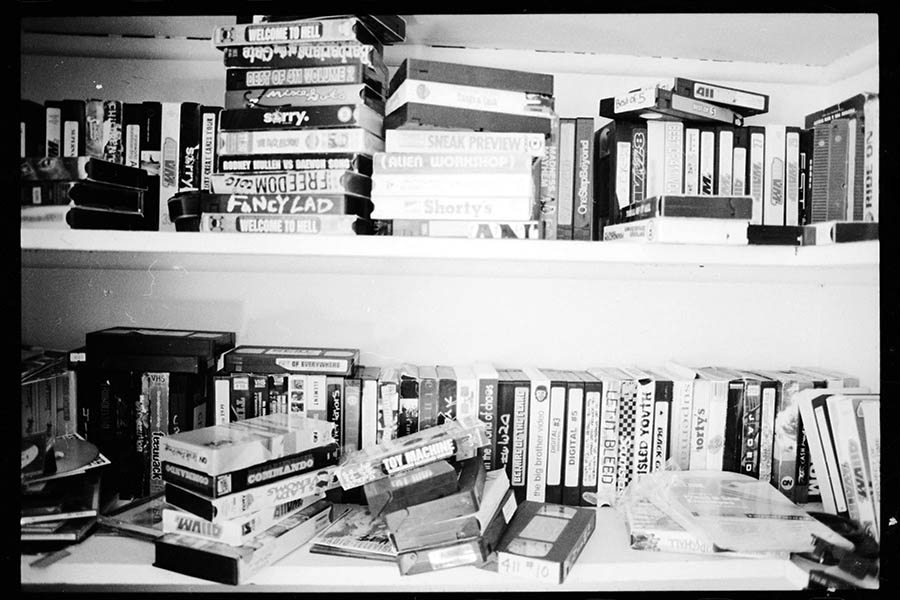
I believe that the general negative response to the Internet with regards to skateboarding is an attempt to deal with the changes that it has caused in society as a whole. In skateboarding, this apprehension has been applied to online videos and montages. There’s a fear that these offerings will erode “real” (that is, physical) skateboard media and thus, skateboarding will lose a large aspect of itself, whether it be its history or simply more tangible representations of the culture.
Except DVDs died when Fully Flared came out. Then when Extremely Sorry came out. Then Stay Gold. Then Pretty Sweet. Few things have died more deaths than the DVD and with each new major release, the Internet is proving that it is a fairly incompetent murderer. Ty told us that Fully Flared and Pretty Sweet are the best selling skate videos of all time with DVDs providing an important source of those sales – hardly the sign of a dead market.
Skateboarding is experiencing a phenomenon common to a lot of subcultures. Metalheads love to collect CDs, cassettes, and vinyls of their favorite bands, just like skaters love physical copies of videos. These objects are given a special value by participants. They become something more than just a piece of plastic. Like totems and other religious paraphernalia, they take on a meaning outside of themselves.
Jake Johnson said it best: “I organize my past based on skate videos, based on the emotions I got from them, the ideas they gave me”. Hard copies of skate videos become a way for us to understand our progression through skateboarding. They become vested with more importance as skating becomes more important to how we see ourselves. Videos become physical representations of one’s identity and because skateboarding, as a subculture, intuitively understands this aspect of itself, I believe that physical skate videos will always remain too valuable to go extinct—regardless of the other changes that skating goes through.
Related Posts
Comments
Popular
-
 RECONTEXTUALIZING ZAK ANDERS, ONE OF TODAY’S MOST MYSTIFYING SKATERS
RECONTEXTUALIZING ZAK ANDERS, ONE OF TODAY’S MOST MYSTIFYING SKATERS
"I don’t want to be this brutal punk that hates everything that people like, and I’m trying really hard to undo that."
-
 RARELY SEEN PHOTOS FROM READ AND DESTROY, THE BELOVED BRITISH SKATE MAG
RARELY SEEN PHOTOS FROM READ AND DESTROY, THE BELOVED BRITISH SKATE MAG
Check out early documentation of London's Southbank, vert ramps tucked into Lord of the Rings-level forests, and everything in between.
-
 NAVIGATING SKATING’S HIGHS AND LOWS WITH MATT MILITANO
NAVIGATING SKATING’S HIGHS AND LOWS WITH MATT MILITANO
Over coffee and cigarettes Matt talks prank shows, ABDs and his love for the VX.
-
 A CHAT WITH LUDVIG HAKANSSON, THE OLDEST SOUL IN SKATEBOARDING
A CHAT WITH LUDVIG HAKANSSON, THE OLDEST SOUL IN SKATEBOARDING
The man loves to read Nietzche, skates in some expensive vintage gear, and paints in his own neoclassical-meets-abstract-expressionist style.
-
 MEET THE SEATTLE ARTIST WHO DESIGNED A BACON ’N EGGS INSPIRED SKATEPARK
MEET THE SEATTLE ARTIST WHO DESIGNED A BACON ’N EGGS INSPIRED SKATEPARK
Breakfast-obsessed skaters rejoice!

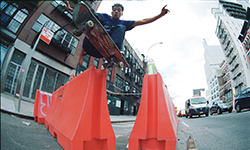

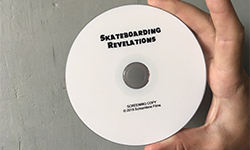

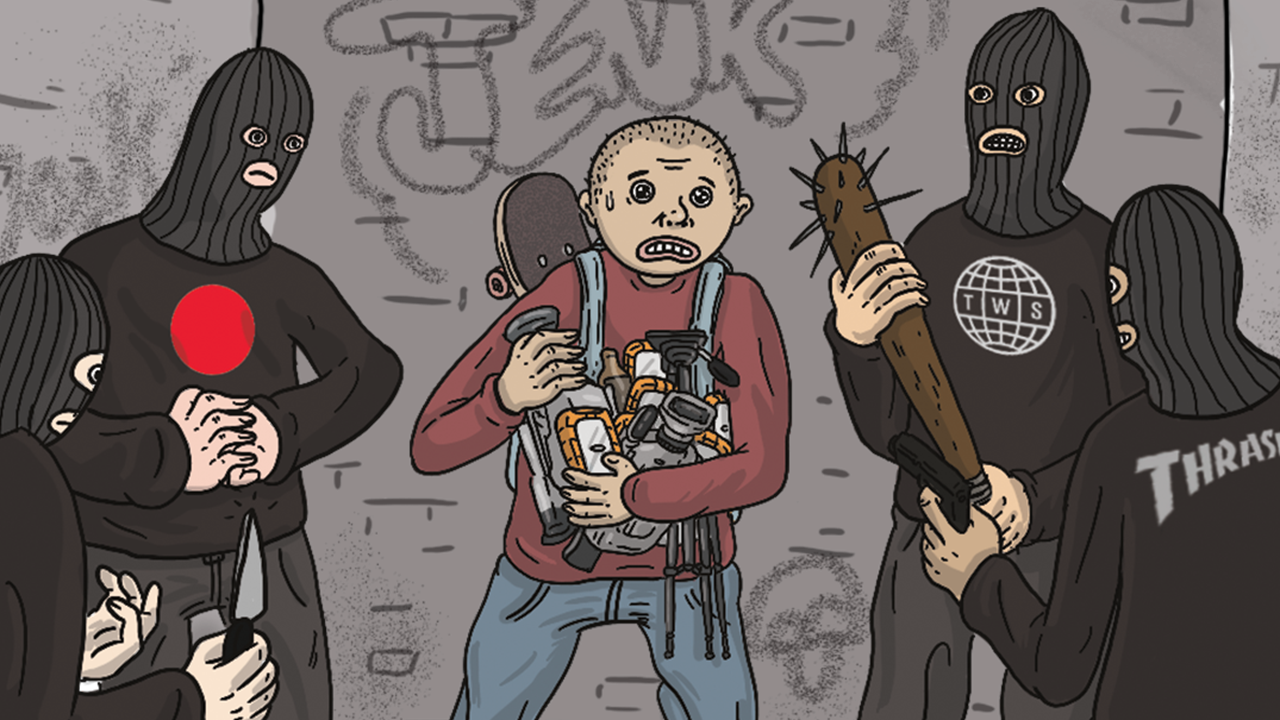
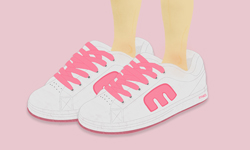
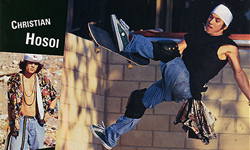
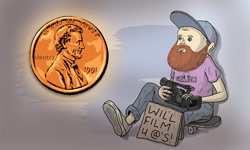
April 30, 2013 12:52 pm
i agree with just about everything except this line: if a part or a trick speaks to you, it will do so regardless of the medium you receive it in.
99% of the time, if i dont bookmark/write it down, i wont watch it again.
you could argue that buying a video for your shelf is the equivalent of a bookmark, but thats equating a $15 purchase with a couple clicks of a mouse.
April 30, 2013 1:06 pm
awesome article. i wish i could find the original physical copies of some of the videos i’ve discovered online but i could be searching for videos like the metro skateshop video, ee2 until i die. i remember buying my first skate video it was a deluxe double pack, the end and destroying america, and the end is still my favorite video disregarding the fact that it didnt have the actual sounds of the skateboard. that first clip of reynolds nollie full cab over a handrail will be stuck in my head until get hit in the head with a bat.
April 30, 2013 1:12 pm
Great article. I don’t really mind stuff being online but I miss the days when companies/crews would save up their footage and release full lengths. Online versus DVD doesn’t matter to me as long as it’s a decent length and has some sick skating.
I’m not a fan of the solo part for $1.99 model on itunes that Plan B and other companies love to do. Even if it’s a killer part, it’s only 5 minutes long at most. Videos are better when there’s a bunch of different skaters in it.
April 30, 2013 1:45 pm
totally agree,but usually back in the days is nowadays, just keep the curbs alives and the trendy fuckin posers drinkin red bull out of the area,..cheers from southamerica, god save charles manson.